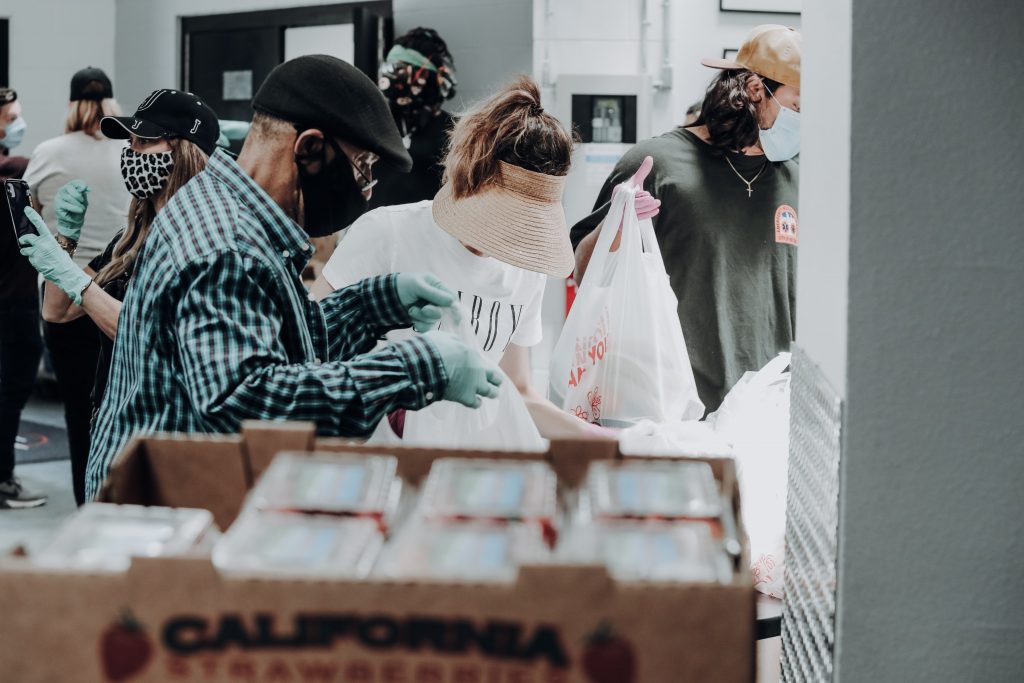COVID-19 pandemic increases need for food programs in Syracuse
Pandemic increases need for food programs in Syracuse

The Onondaga County Health Department findings were grim even before the COVID-19 pandemic.
In late 2019, the OCHD released the 2019-2021 Community Health Assessment and Improvement Plan, showing that half of Syracuse census tracts qualify as food deserts, and more than a quarter of Onondaga County residents are food insecure. The OCHD pledged to improve food security and the overall health of county residents. Then the pandemic hit.
Before the pandemic, many Syracuse residents were already struggling financially. The U.S. Census Bureau ranks Syracuse as the 18th poorest city in the country. According to the OCHD assessment, more than 30% of residents participate in the Supplemental Nutrition Assistance Program (SNAP), previously known as food stamps. Amalia Swan, chief outreach officer at the Food Bank of Central New York, said that, since March, the need for SNAP benefits has grown in Syracuse.
“We definitely have seen an increase in those seeking benefits,” Swan said. “We have older adults who were on a fixed income to begin with. But the price of food is higher. The price of their medication is higher. We’re getting calls from those who have reduced hours, so they can’t feed their families, and those who have lost businesses and lost a lot of their life savings.”
A new local food council, the Syracuse-Onondaga Food Systems Alliance (SOFSA), recognized the community’s need and created a map that gave the locations of food sites and businesses offering free meals and reallocated $17,000 to support food organizations in an effort to help Onondaga County residents. Maura Ackerman, the facilitator at SOFSA, said the organization actually decided to launch early, in March 2020 rather than in June, because of COVID-19.
Unemployment, which skyrocketed in the early months of the pandemic, exacerbated the area’s food insecurity. According to the New York State Department of Labor, unemployment in Syracuse reached 16.3% in April, higher than both the state average of 15% and the national average of 14.4%. However, this actually prevented some Syracuse residents from receiving food assistance. After the first stimulus bill was passed in April and the COVID-19 Pandemic Unemployment Assistance (PUA) program started the same month, giving qualifying Americans an extra $600 per month on top of state unemployment benefits, it became harder to qualify for SNAP.
“That income made those who were eligible for SNAP not eligible for SNAP. It was a good and bad thing,” Swan said. “It did help some folks through a difficult time, but in the meantime between time, it made others ineligible until that benefit ran out. So, now we’re seeing that people’s unemployment benefits have run out. They’re not getting those additional funds, so we’re seeing the need increase again.”
Despite the community’s rising need for the food bank’s services, the pandemic has created further challenges for food bank operations. Some volunteers have had to stay home because of underlying conditions or age, so several of the food bank’s pantries and the Kids Cafe program had to shut down. These closures, coupled with the bureaucratic process of applying for SNAP, have the food bank working hard to meet the city’s needs through all available programs.
The food bank has distributed 20.4 million pounds of food since it was founded in 1985. From just March to June this year, it distributed 8.4 million pounds. Swan believes there is a need for more help from the government because the SNAP benefits alone, even since the USDA increased benefits to the maximum amount in July, do not provide enough assistance to Syracuse residents.
Additionally, the Senate’s failure to pass a second stimulus bill in September and President Trump’s urges for Republicans to halt negotiations with Democrats until after the election, make it unclear if and when the bill will be passed. However, even after the election, with Trump and some Republicans’ refusal to acknowledge Joe Biden’s win, the Senate has not made notable progress. Once they do, it is also difficult to predict the size of the stimulus checks going to individual Americans and whether they will be enough.
“I think we’d be a little better off if the government could get it together and pass something,” Swan said. “I’m trying to be politically correct. I’m trying so hard. You know, it’s difficult to see our families struggle with a benefit that’s inadequate to begin with. SNAP benefits don’t last the full month. It’s supposed to be a supplement, so it’s something, but it’s not enough. It’s not enough. And I think we will see increased service, increased requests for assistance.”
Ackerman of SOFSA agrees that the pandemic has shown how the current federal programs for food security are insufficient, especially in times of crisis. She hopes this will cause lasting change in program operations.
“We’re clearly not doing enough,” Ackerman said, “and I think that is now much more in people’s awareness. People who have never had to worry about having food on their table before or having food on the grocery shelves before are suddenly much more aware of the supply chain and its fragility and each of our own economic fragility. So my hope is that we can come together and not forget this moment.”





